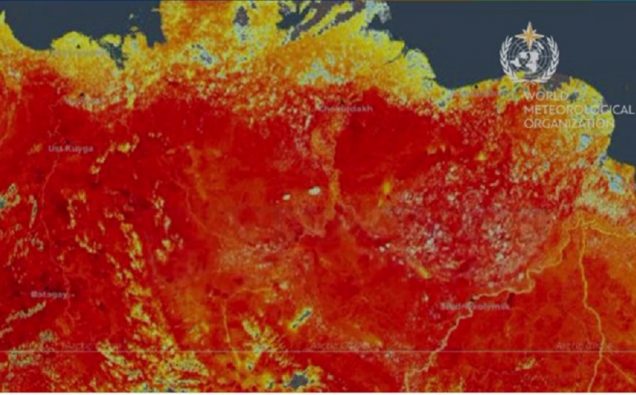
The year 2020 marks the end of the warmest decade on record with one of the three hottest years ever measured and the worrisome trend in heating up of the planet continues.
Not even a global slowdown in economic activities caused by the coronavirus epidemic has helped the planet cool off a bit.
A study earlier this year said the warming set into motion is likely to continue for centuries even if humans were to stop the release of dangerous gases into the atmosphere.
Meanwhile, the melting of ice on glaciers, frequent floodings, hot summers, and wildfires have spelled alarming trends that might endanger many forms of life on the planet.
In its latest report Friday, the World Meteorological Organization said Friday that despite a cooling La Nina event, 2020 has been a year of exceptional heat.
The WMO has also documented the last six years as being the warmest.
In January, the UN agency will issue consolidated temperature figures for 2020, based on five global temperature datasets.
So far, all five datasets for the first 10 months of 2020 has placed this year as the second warmest for the year to date, following 2016 and ahead of 2019.
Based on monthly reports from the European Unions’ Copernicus Climate Change Service, the United States National Oceanic and Atmospheric Administration and NASA’s Goddard Institute for Space Studies, and the Japan Meteorological Agency, November has been classified as either the warmest or second warmest on record.
The difference between the warmest three years is small and exact rankings for each data set could change once data for the entire year are available, according to WMO.
Ranking temperatures for individual years is less important than long-term trends, the UN weather agency explained.
Since the 1980s each decade has been warmer than the previous one. And because of record levels of heat-trapping greenhouse gases in the atmosphere, the trend is expected to persist.
In particular, carbon dioxide is driving the planet to future warming because it remains in the atmosphere for many decades.
But the WMO’s Global Annual to Decadal Climate Update says there is a one-in-five chance that the average global temperature will temporarily exceed 1.5 °C by 2024.
According to most models, La Nina is expected to peak in intensity either this month or in January and continue through the early part of next year.
“Record warm years have usually coincided with a strong El Niño event, as was the case in 2016”, WMO chief Petteri Taalas said in a statement explaining the weather patterns.
Tuvalu, an archipelago of nine atolls in the South Pacific Ocean, where the average height of the islands is less than 2 meters above sea level, is highly susceptible to the effects of global warming, a UN news report says.
“We are now experiencing a La Nina, which has a cooling effect on global temperatures, but has not been sufficient to put a brake on this year’s heat”.
“Despite the current La Nina conditions, this year has already shown near-record heat comparable to the previous record of 2016”, WMO official explained.














